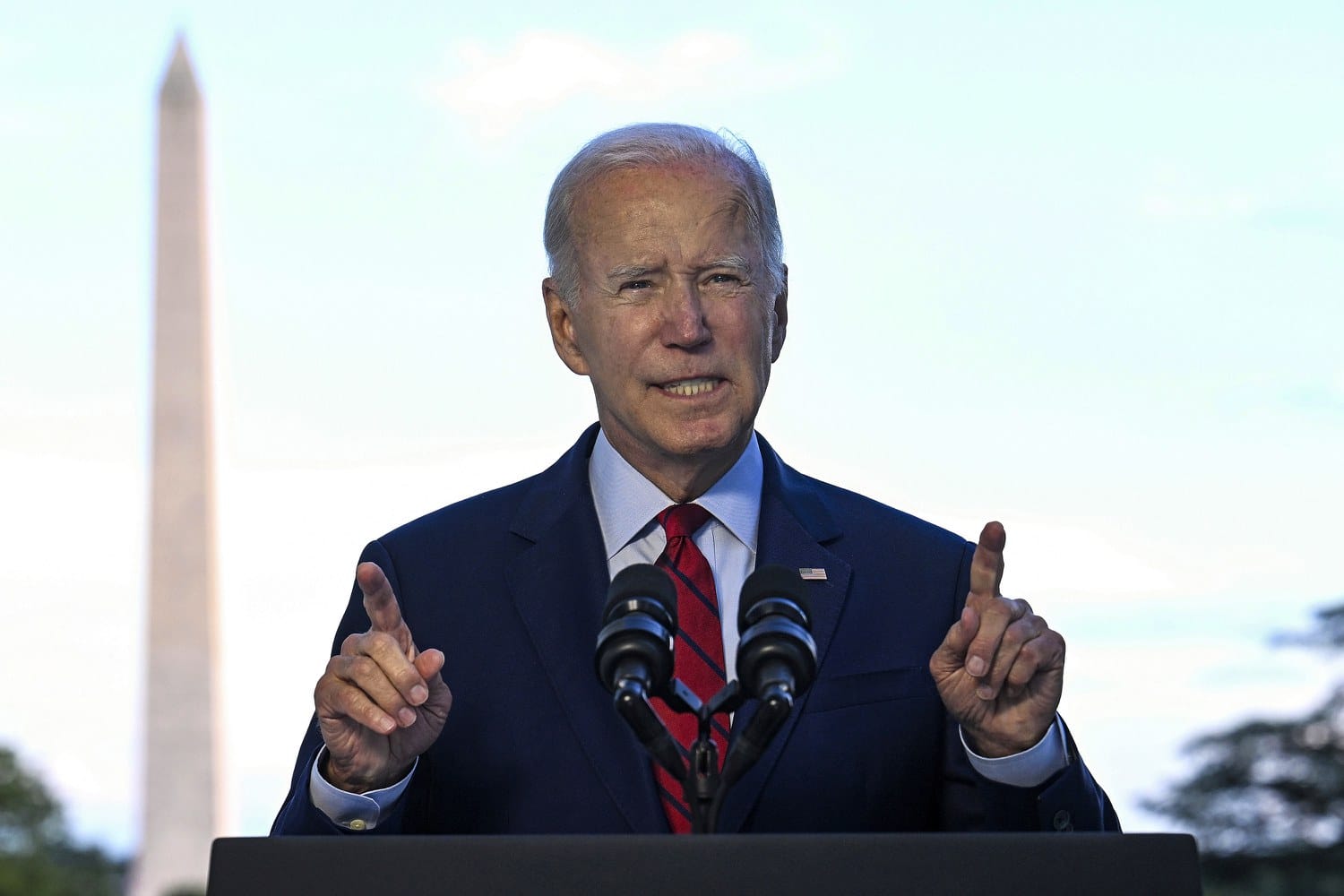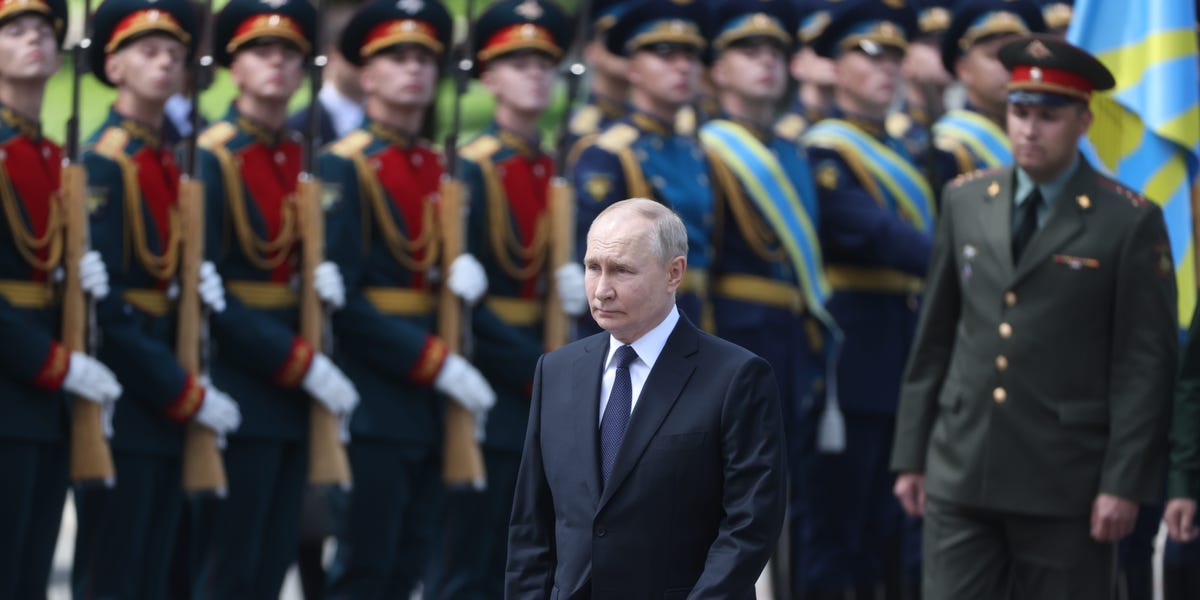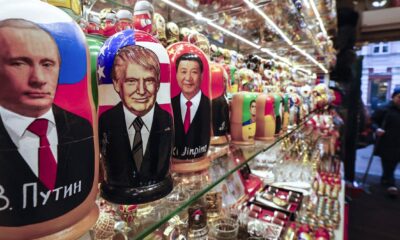China
Next decade will be ‘decisive’ for rivalry with China — Radio Free Asia

The world is at an “inflection point” as China seeks to rewrite the rules of the global order, and the next decade will prove “decisive” for the rivalry between Beijing and Washington, U.S. President Joe Biden says in a new national security strategy released by the White House on Wednesday.
The 48-page strategy, which was delayed due to the Ukraine war, outlines Biden’s national security priorities and describes China as “the only competitor with both the intent to reshape the international order and, increasingly, the economic, diplomatic, military, and technological power to do it.”
“In the competition with the PRC, as in other arenas, it is clear that the next ten years will be the decisive decade,” it says, using an acronym for the People’s Republic of China. “We stand now at the inflection point, where the choices we make and the priorities we pursue today will set us on a course that determines our competitive position long into the future.”
The document’s release comes ahead of the Chinese Communist Party’s National Congress this weekend, which is expected to anoint President Xi Jinping to a norm-shattering third term and cement a policy program meant to usher in “the great rejuvenation of the Chinese nation” by 2049.
Beijing’s increasingly assertive foreign policy under Xi led earlier this year to the announcement of a “no limits” relationship with Moscow prior to its Feb. 24 invasion of Ukraine, as well as pledges to rewrite global rules of governance.
Biden’s national security document notes that while Russia and China “are increasingly aligned with each other,” the challenges that they present to the United States are distinct, with Beijing the more important long-term focus as it moves to “layer authoritarian governance with a revisionist foreign policy.”
“We will prioritize maintaining an enduring competitive edge over the PRC while constraining a still profoundly dangerous Russia,” it says, noting that Beijing has clear ambitions “to become the world’s leading power.”
“At the same time, the PRC is also central to the global economy and has a significant impact on shared challenges, particularly climate change and global public health,” it says. “It is possible for the United States and the PRC to coexist peacefully, and share in and contribute to human progress together.”
But the strategy document also reiterates U.S. government support for the idea of “one China” and rejects any support for Taiwanese independence.
“We have an abiding interest in maintaining peace and stability across the Taiwan Strait, which is critical to regional and global security,” it says, noting U.S pledges to defend Taiwan. “We oppose any unilateral changes to the status quo from either side, and do not support Taiwan independence.”
At an event to launch the strategy at Georgetown University on Wednesday, Biden’s national security adviser, Jake Sullivan, said that the strategy was not an ideological manifesto for a free world against a rising tide of authoritarianism.
Sullivan said the United States was building “the broadest possible coalition of nations to leverage our collective interests” in defending a rules-based order, whether or not all involved are democracies, or agree with U.S. policies.
“Even if our democratic partners and allies don’t agree on everything, they are aligned with us – and so are many countries that do not embrace democratic institutions, but nevertheless depend upon and help sustain a rules-based international system,” Sullivan said. “They don’t want to see it vanish.”
China
China Unveils Draft Catalogue to Promote Foreign Investment

The 2024 Draft FI Encouraged Catalogue features a national and regional sub-catalogue, highlighting industries favorable for foreign direct investment in China. It expands incentives in sectors like medical devices, batteries, new energy vehicles, pet care, elderly care, and cultural tourism.
Similar to the previous version, the Draft FI Encouraged Catalogue includes two sub-catalogues – one covers the entire country (“national catalogue”) and one covers the central, western, and northeastern regions (“regional catalogue”).
Together, the FI encouraged catalogue identifies industries where foreign direct investment (FDI) will be welcome and treated with favorable policies in China.
The lengthening of the catalogue demonstrates China’s firm standing on economic opening-up and the fact that more investment fields will favor foreign investors.
Overall, the revision of the 2024 Draft Foreign Investment (FI) Encouraged Catalogue focuses on:
In specific sectors, the new Encouraged Catalogue introduces or refines incentives for areas like medical devices, batteries, new energy vehicles, pet care, elderly care, and cultural tourism, which are worth noting.
| This article was first published by China Briefing , which is produced by Dezan Shira & Associates. The firm assists foreign investors throughout Asia from offices across the world, including in in China, Hong Kong, Vietnam, Singapore, and India . Readers may write to info@dezshira.com for more support. |
Read the rest of the original article.
China
Trump, Xi and Putin: a dysfunctional love triangle with stakes of global significance

Reports suggest a phone call between Donald Trump and Vladimir Putin hinted at a complex US-Russia relationship. Trump aims to exploit Russia-China tensions, potentially reshaping alliances and international dynamics.
Reports of a phone call between the US president-elect, Donald Trump, and his Russian counterpart, Vladimir Putin (although quickly denied by the Kremlin) have given a first flavour of the tone and direction of their relationship in the immediate future. According to the Washington Post, Trump spoke with Putin on November 7, warning him against any escalation in Ukraine and reminding him of “Washington’s sizeable military presence in Europe”.
Regardless of whether it happened or not, any – if even only indirect – exchange of messages between the pair should be heeded by America’s allies in the west, as well as Russia’s major partner in the east: China’s Xi Jinping. And there has been plenty of such messaging over the past few months.
Putin, earlier on the day of the alleged phone call, gave a long address at the annual meeting of the Valdai Discussion Club thinktank in the Black Sea resort of Sochi. Unsurprisingly, the speech – and Putin’s answers to questions from the audience afterwards – were anti-western and full of confidence that a new world order was now in “the phase of genuine creation”.
But at the same time, Putin took pains to flatter Trump as a “courageous man”, saying he’d consider any proposals from Trump aimed at restoring US-Russia relations and ending what Putin called the “Ukrainian crisis”.
But he then spent considerably more time making the case for the relationship between Russia and China. Here his audience was less the incoming US president and more his old friend the Chinese president.
The reason for this goes back to one of Trump’s messages to Putin and Xi. Trump told Tucker Carlson at a campaign event on October 31 that he would work to “un-unite” Russia and China. Trump implied that the two are “natural enemies” because Russia has vast territory that China covets for its population.
Donald Trump: US will ‘un-unite’ Russia and China.
Russia and China have a history of conflict over territory along their long land border in Siberia. This was part of the Sino-Soviet split in the 1960s, which preceded the US opening to China under then-president Richard Nixon in the 1970s.
In contrast to Nixon, Trump looks set to try to reset US relations with Moscow rather than Beijing. While it’s hard to imagine a similar split between Russia and China today, Trump’s apparent desire to exploit discord between Russia and China to the advantage of the US should not be dismissed as completely unrealistic either.
On the face of it, Putin and Xi are closely aligned. But a deeper dive into the relationship between Russia and China suggests it’s primarily one between their current leaders and lacks much of the institutional depth that other alliances have.
Putin and XI: a ‘new era’ of partnership between their two countries.
EPA-EFE/Maxim Shemetov/pool
There is a lot of resentment of China in Russia in both public and policy circles. Russians remain wary of China’s growing role in Central Asia and worry about the potential for disputes over long-contested borders. Many are also resentful of the fact that Moscow is now a junior partner to Beijing.
These are potentially all issues that Trump could use to drive a wedge between Russia and China. But a lot hinges on what Putin perceives is in it for Russia. This should be focusing minds in the west about what shape Trump’s Ukraine policy will take and what this means for Ukraine and the west.
A Trump-brokered agreement is likely to involve the recognition of Russian territorial gains in Ukraine since 2014, complete sanctions relief and broad international rehabilitation granted to Moscow. It would surely also involve a down-scaling of the US commitment to Nato and a pledge not to pursue further enlargement of the alliance.
Trump might get a deal with Putin, but whether Putin would stick to it is questionable. Putin is much more likely to simply play both sides in the hope that Russia might in this way become a third peer alongside China and the US in an emerging new international order.
This is of course a complete fantasy given the size of the Russian economy alone, but unlikely to affect Putin’s calculations, given his longing to restore Russia’s superpower status.
Chinese leverage
An American opening to Moscow, as opposed to Beijing, is also difficult to imagine because America’s European partners are unlikely to go along with it. Some, like Hungary’s Viktor Orbán and Slovakia’s Robert Fico might find the idea attractive in general, but Germany and France, among others in the EU, are more likely to want to make a deal with China.
The reason for this is economic – they have largely overcome their dependence on Russian oil and gas, but not on China as an export market.
Shared values? Donald Trump and Vladimir Putin at the commemoration of the 100th anniversary of the 1918 armistice.
EPA-EFE/Ludovic Marin
Beijing, meanwhile, won’t sit idly by while Trump tries to drive a wedge between Russia and China. Despite Putin’s efforts to build parallel relations with North Korea and Iran, Xi retains plenty of economic leverage over Russia and is going to use it to keep Russia on side.
Diplomatically, Putin depends on Xi and China-led outfits such as the Shanghai Cooperation Organisation and the Brics. While there are differences between Moscow and Beijing, they also both share a world view of a US in terminal decline – which is now likely to be further accelerated by the upheaval expected from a second Trump term.
For China in particular, preventing the US from completely pivoting to the Indo-Pacific will be a key priority – and not allowing Trump to cut a deal with Putin at China’s expense will be high on Xi’s agenda as a means to achieving that end.
Trump might still try to open up to Russia by striking a deal with Putin over Ukraine. But such a deal with Putin is not the same as dividing Russia and China. On the contrary, it is more likely to “un-unite” Europe and the US and to further weaken the transatlantic alliance.
Rather than making America great again, Trump could further hasten its decline by mistaking the destruction of what is left of the liberal international order with its reshaping according to US interests.
This article is republished from The Conversation under a Creative Commons license. Read the original article.
Business
Russia’s Booming Economy is Straining a Vital Trading Route with China

Russia’s railway industry is experiencing a significant downturn, with a nearly 30% investment cut and a 5% freight volume decline, complicating trade with China amidst the economic impacts of the Ukraine war.
Downward Trend in Russia’s Railway Industry
Russia’s railway industry is currently experiencing a significant downturn, largely due to the impacts of the ongoing conflict in Ukraine. According to MMI Research, this sector is facing its biggest slowdown since the Great Financial Crisis, with freight volumes dropping by 5% in the first 11 months of 2024. The war-driven economy has hindered trade, particularly with China, which heavily relies on rail transport.
Investment Cuts and Economic Consequences
Investment in Russia’s railways is set to decrease by almost 30% next year, dropping to 890 billion rubles (approximately $8.5 billion). This reduction is attributed to high interest rates, currently at a record 21%, which further complicate financing options. The state-owned Russian Railways is reconsidering future investments, indicating potential cuts by another third through 2030.
Challenges Affecting Trade with China
The decline in rail capacity poses significant challenges for Russia’s trade with China. As Western sanctions push Russia to diversify its trade routes, rail transport has become increasingly vital for moving goods. However, supply bottlenecks, exacerbated by the need to transport war-related materials, threaten to disrupt this crucial trading relationship further.
Source : Russia’s overheated economy is squeezing one of Moscow’s key trading channels with China







